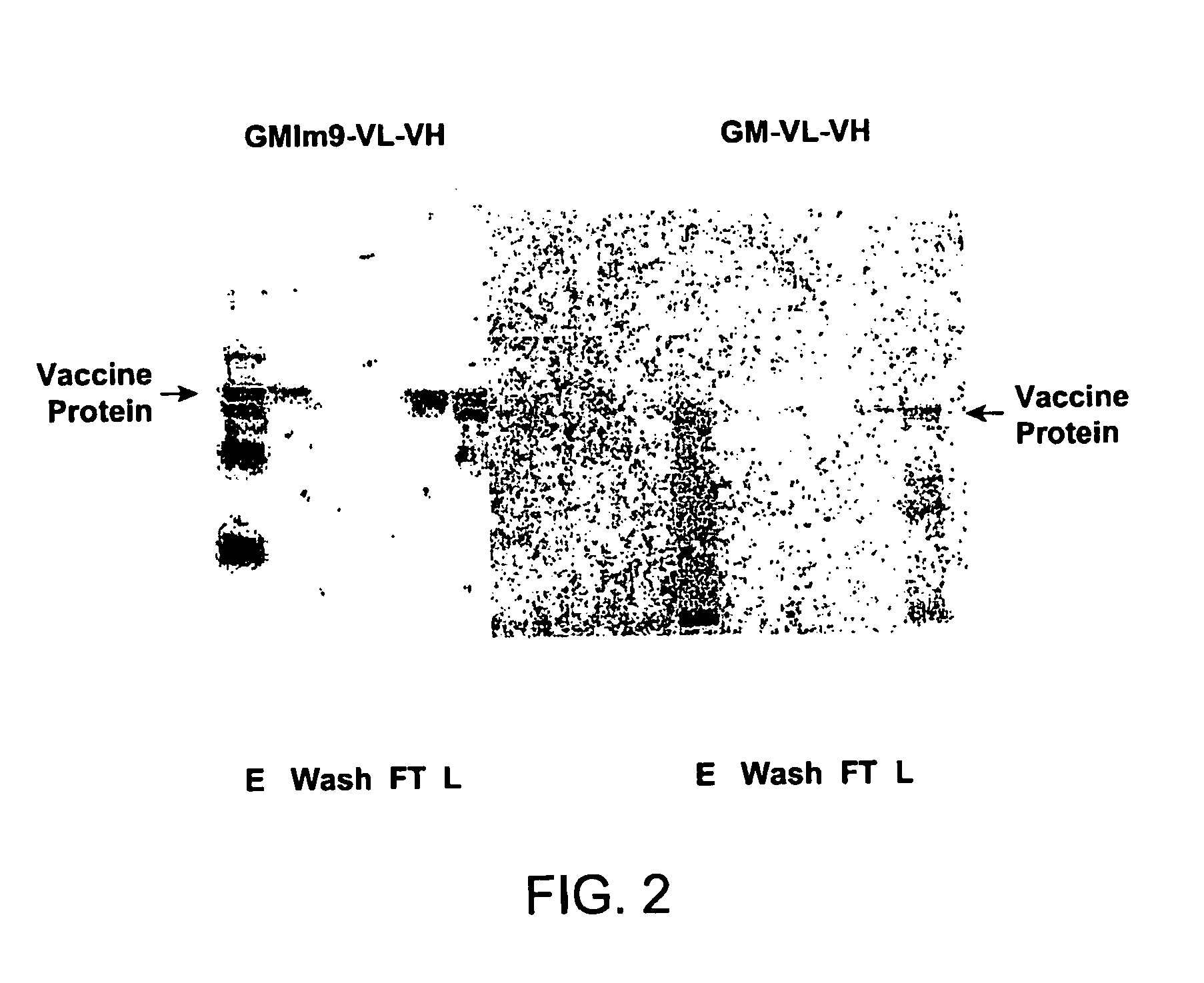Fusion protein constructs
a technology of fusion protein and construct, which is applied in the field of fusion protein constructs, can solve the problems of high protein synthesis rate, insufficient, and difficult to obtain in vivo, and achieve the effect of increasing the stability of fusion protein and high synthetic yield of full-length
- Summary
- Abstract
- Description
- Claims
- Application Information
AI Technical Summary
Benefits of technology
Problems solved by technology
Method used
Image
Examples
example 1
[0078]The 38C13 mouse B-cell lymphoma Id scFv protein is fused to mouse GM-CSF connected by a normal GGGGS linker or an Im9 linker, giving rise to an immunoglobulin construct. The fusion proteins with and without the Im9 linker were expressed in the cell-free protein synthesis system. Their cell-free expression yields and purification are compared. The result shows that the fusion structure with the Im9 linker has a higher soluble yield than the fusion construct without it. Also, the Im9 linker improves the polypeptide stability during purification.
Construction of the Fusion Protein Expression Plasmids
[0079]First, the gene that encodes the fusion protein, GM-VL-VH, was constructed, which contains the variable regions of 38C13 Id protein and mouse GM-CSF. GM-CSF protein, which is located at the N-terminus of the fusion structure, is connected to the scFv domain through a five amino acid linker GGGGS. The GM-CSF is also extended at its N-terminus by the first five codons of CAT (E.col...
PUM
| Property | Measurement | Unit |
|---|---|---|
| pH | aaaaa | aaaaa |
| pH | aaaaa | aaaaa |
| temperature | aaaaa | aaaaa |
Abstract
Description
Claims
Application Information
 Login to View More
Login to View More - R&D
- Intellectual Property
- Life Sciences
- Materials
- Tech Scout
- Unparalleled Data Quality
- Higher Quality Content
- 60% Fewer Hallucinations
Browse by: Latest US Patents, China's latest patents, Technical Efficacy Thesaurus, Application Domain, Technology Topic, Popular Technical Reports.
© 2025 PatSnap. All rights reserved.Legal|Privacy policy|Modern Slavery Act Transparency Statement|Sitemap|About US| Contact US: help@patsnap.com


